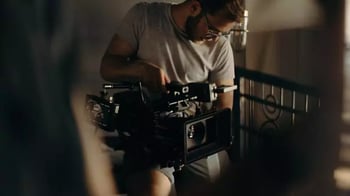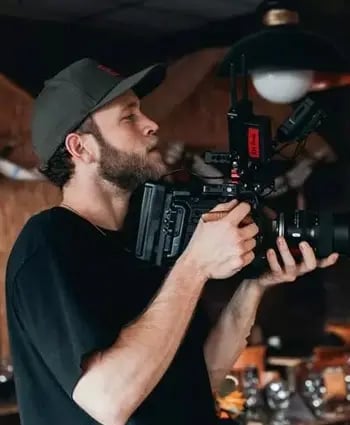Learning the Basics of Shot Composition
Our guide on shot composition basics. From the Rule of Thirds to using depth and symmetry, discover how to craft captivating visuals that resonate.
Great visuals aren't just about having high-end equipment. They're also about understanding the art of shot composition. If you've ever been intrigued by how some videos hold your attention through mere visuals, then it's time to master the basics of shot composition. Let’s delve into the essentials that can turn your video production shots from mediocre to magnificent.
1. Rule of Thirds
One of the foundational concepts in photography and videography, the Rule of Thirds divides your frame into nine equal sections with two vertical and two horizontal lines. By placing subjects or key elements along these lines or at their intersections, you can create a balanced and engaging shot.
-
Why it Works: Our eyes naturally gravitate towards these points, so using them helps guide the viewer's focus.
-
For More Depth: Explore this Rule of Thirds guide to understand its practical applications.
2. Leading Lines
Leading lines are elements in a shot that guide the viewer's eyes towards a focal point, often creating depth or perspective.
-
Examples: Roads, railway tracks, or a hallway can serve as leading lines.
-
Application: Use leading lines to lead the viewer's eyes towards your subject or to create a journey within your shot.
3. Framing
Using elements within your shot to frame your main subject can add depth and context. It's like a picture within a picture.
-
Natural Frames: Trees, archways, or windows can work wonders to naturally frame your subject.
-
Effect: Framing can isolate your subject, drawing more attention to it and adding a narrative element.
4. Symmetry & Balance
A symmetrical shot can be visually pleasing, while also creating a sense of harmony and balance.
-
Reflections: Use water bodies or reflective surfaces to introduce symmetry in your shots.
-
Balancing Elements: If there’s a prominent subject on one side of your shot, consider adding a less dominant object on the other to maintain balance.
5. Depth
Creating a sense of depth makes your shots more three-dimensional and engaging.
-
Layering: Incorporate foreground, mid-ground, and background elements to create depth. This can also help guide the viewer's eyes through different parts of the scene.
-
Using Focus: A shallow depth of field, where your subject is sharp but the background is blurred, can further enhance the feeling of depth.
6. Headroom & Looking Space
It's crucial to leave an appropriate amount of space above a person's head in a shot, known as headroom. Similarly, if a subject is looking or moving in a particular direction, ensure there’s enough space in that direction, termed as looking space.
7. Break the Rules
While these guidelines provide a solid foundation, sometimes the most captivating shots come from breaking the rules.
-
When to Break: Once you've mastered the basics, start experimenting. If you feel a shot communicates your story better by defying a rule, go for it!
-
Inspiration: Research 'breaking compositional rules' to spark your creativity.
The Journey of Visual Storytelling
Learning the basics of shot composition is like acquiring a new language. As you become fluent, you’ll find it easier to communicate your stories visually, captivating your audience effortlessly.
Remember, every rule has its place, but every artist has their interpretation. Embrace the fundamentals, but let your unique perspective shine through. Dive in, practice, and watch your visuals transform.
Written by James Bryant Video strategist and co-founder for Venture Videos — a full-service video production agency that specialises in producing creative videos & campaigns that get real results.























